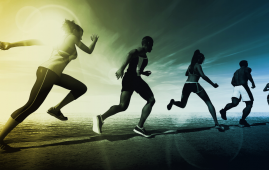

10% of adults worldwide have type 2 diabetes, a widespread condition for which heredity and obesity are known risk factors. According to a recent study from the Karolinska Institutet, men and women who are predisposed to diabetes have different risk factors for type 2 diabetes and prediabetes. The journal Frontiers in Endocrinology recently published the findings.
Low serum levels of adiponectin, a protein found in adipose tissue, were a reliable independent predictor of type 2 diabetes and prediabetes in healthy women. Instead, low serum levels of the liver protein IGFBP-1 were a substantial independent predictor of type 2 diabetes and prediabetes in healthy males. Thus, these proteins—adiponectin, IGFBP-1, markers of insulin sensitivity in adipose tissue, liver, and muscle—can determine if a person has a high risk of developing type 2 diabetes in the next ten years.
The results of an earlier study conducted in Shanghai in 2016 indicated similar gender inequalities. If males with prediabetes increased their physical activity and muscle mass, their chance of developing type 2 diabetes in the future was dramatically lowered. The same study, however, revealed that in order to prevent type 2 diabetes in women with prediabetes, they should either reduce their high waist circumference and abdominal fat.
“Our study explains why this gender difference was seen when it came to preventive lifestyles,” says Kerstin Brismar, professor of diabetes research at the Department of Molecular Medicine and Surgery. The proteins we studied in men and women increase with increased muscle mass and physical activity (IGFBP-1) and with reduced abdominal obesity and calorie restriction (adiponectin), she continues.
It may also explain why regular exercise among abdominal obese women is not enough to reduce the risk of type 2 diabetes.
“We have previously shown that waist circumference was a strong independent predictor of type 2 diabetes in women and now we were able to show that it was linked to reduced production of adiponectin, a protein/hormone produced in the adipose tissue to, among other things, protect against cell stress,” says Kerstin Brismar.
Other studies in both humans and mice have shown that both high normal levels of adiponectin and high normal levels of the liver protein IGFBP-1 protect against getting type 2 diabetes.
more recommended stories
 Fat-Regulating Enzyme Offers New Target for Obesity
Fat-Regulating Enzyme Offers New Target for ObesityKey Highlights (Quick Summary) Researchers identified.
 Gestational Diabetes Risk Identified by Blood Metabolites
Gestational Diabetes Risk Identified by Blood MetabolitesKey Takeaways (Quick Summary for Clinicians).
 Pelvic Floor Disorders: Treatable Yet Often Ignored
Pelvic Floor Disorders: Treatable Yet Often IgnoredKey Takeaways (Quick Summary) Pelvic floor.
 Circadian Control of Neutrophils in Myocardial Infarction
Circadian Control of Neutrophils in Myocardial InfarctionKey Takeaways for HCPs Neutrophil activity.
 E-Cigarette Use and Heart Attack Risk in Former Smokers
E-Cigarette Use and Heart Attack Risk in Former SmokersKey Takeaways for Clinicians and Nurses.
 Ultramarathon Physiology: What HCPs Should Know?
Ultramarathon Physiology: What HCPs Should Know?Ultramarathon Metabolism: What Happens to the.
 High-Intensity Training and Oxidative Stress Insights
High-Intensity Training and Oxidative Stress InsightsNew Evidence Linking High-Intensity Training and.
 Sterilized Fermented Beverage for Obesity: New Evidence
Sterilized Fermented Beverage for Obesity: New EvidenceEarly Insights Into a Sterilized Fermented.
 Cardiovascular Risk and Sudden Cardiac Death in Diabetes
Cardiovascular Risk and Sudden Cardiac Death in DiabetesRising Sudden Cardiac Death (SCD) Risk.
 Perinatal Mental Health Challenges Highlighted in New Study
Perinatal Mental Health Challenges Highlighted in New StudyMental Health Challenges in New Parents:.

Leave a Comment